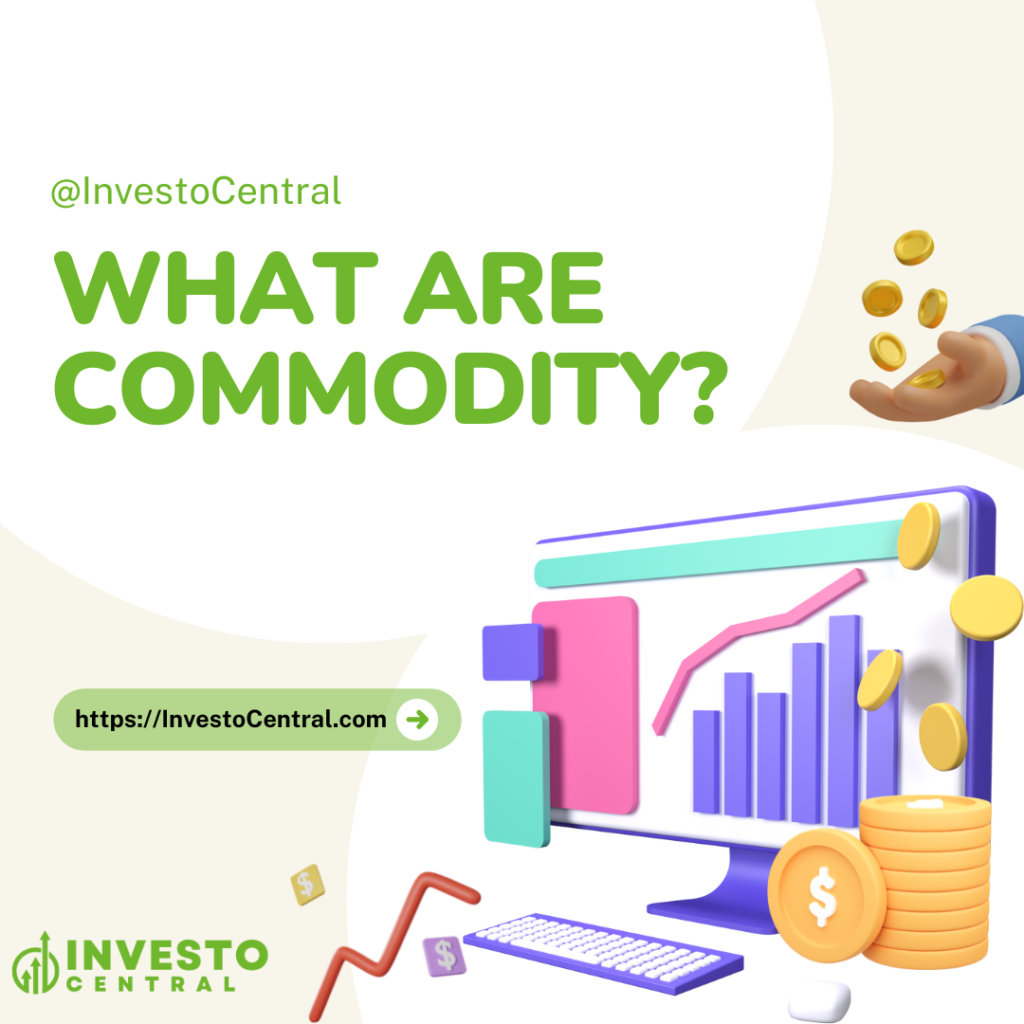
Commodity Market
Amongst various instruments of investment, commodity trading is a common term. Other than bonds and stocks, the commodity market forms a major portion of investment parlance. Commodities such as oil and natural gas, gold and silver, cotton, etc. are the building bricks of a global economy. The commodity market tends to perform well during market volatility. Commodities under trade are divided into four important categories – metal, agricultural, energy, livestock, and meat. Investment in commodities becomes lucrative when inflation is high, the yield on bonds is low and the stock market is highly volatile. The current situation is very similar to high inflation and an unpredictable stock market, drawing many investors to commodity trading. Commodity prices are rising amidst soaring oil prices, shrinking wheat supply driving inflation beyond common reach.
The benefits of investing in the commodity market are:
• Minimize portfolio volatility
• Hedge against inflation
• These are physical assets that are used as a store of value
It should be noted that the commodity market and stock market have an inverse correlation. For example, higher crude prices tend to depress the stock market.
Risk factors with Commodity market are:
• Volatility: Global incidents such as war and tensions make commodity trading volatile. Most commodity funds trade in futures and options, which makes the commodity market more volatile.
• Exposure to foreign market: investment in the commodity market is akin to investment in the global market as prices in one part of the world affect commodity prices globally. These are also affected by global economic and currency stability.
• Speculative trading: futures contracts track underlying commodity index, and such securities involve speculative activities are making commodity trading even more volatile.
How to invest in the commodity market
One can always invest in commodities in their physical forms such as physical gold, crude oil, wheat, and metals. But their handling and transportation cost is costly and impractical. There are other ways to invest in the commodity market as discussed below:
• Commodity stocks: one can purchase stocks related to companies that deal in commodities such as oil stocks or agricultural stocks. This is the easiest way to invest because it is just like investing in the stock market.
• Futures contracts: it is a legal contract in which buyers and sellers agree to trade at a predetermined price at a specified time in the future. This allows commodity traders to lock in the price of the commodities providing an inflationary hedge against prices. However, such trading is highly speculative in nature, and beginners are advised to deal with caution.
• Commodity exchange-traded funds (ETFs) & mutual funds: commodity market has a major portion of ETFs and mutual funds that deal in commodity trading. One can always buy gold or silver ETFs. These ETF units do not have purity-related issues of gold as these are held electronically in investors’ demat accounts.
Popular commodity exchanges in the US
Chicago Mercantile Exchange (CME) group and the New York Mercantile Exchange (NYMEX) are the most popular commodity exchanges in the US. Contracts backed by commodities such as oil, gold, and silver are up for sale and purchase in the commodity exchange. These exchanges serve as hub for trading commodities.
Four main participants in a commodity exchange are:
• Producers who supply commodities for trade which forms the basis for trade
• End consumers who build demand for commodities and are the final users of the commodity
• Speculators who bet on the probable direction of commodity prices intend to gain from favorable price movement.
• Traders who provide liquidity in the commodity market in case of imbalances between demand and supply of commodities
Essential characteristics of commodities that make it eligible for trading at the exchange. As understandable, not all commodities are eligible for trading at commodity exchanges. Certain properties of commodities must be met to be able to trade in the commodity market.
These essential features are listed below:
• Longer shelf life: commodities with a longer shelf life, probably more than a year, are eligible for trading. Easily perishable goods have shorter durability and therefore cannot have long-term contracts on them.
• Democratic supply: monopoly in the commodity market is not favorable for commodity trading. There should be an open supply of commodities in the market. Monopolized market, either by the government or a private party, makes trading impossible for a trading
• Price fluctuation: trading involves frequent fluctuations in the commodity’s price. Commodities with frequent fluctuations in their price are most suitable for trading in the commodity exchange market.
Conclusion
The commodity market is an integral part of investment strategy for traders, investors, and speculators, each with their respective appetite for risk-taking. Commodity trading is often used as a tactical strategy for specific economic or market environments. Returns are comparable to stock market trading but come with little more volatility as commodity prices bear principal risks such as political stability, currency rates, and supply shocks. Commodity trading is often used as a hedge against inflationary pressures in the economy. Commodities are also used as a store of value. Beginners in the commodity market must act with little more caution due to the inherently volatile nature of the commodity market. Commodity exchanges are empowered to make rules and enforce contracts binding on both buyers and sellers.

